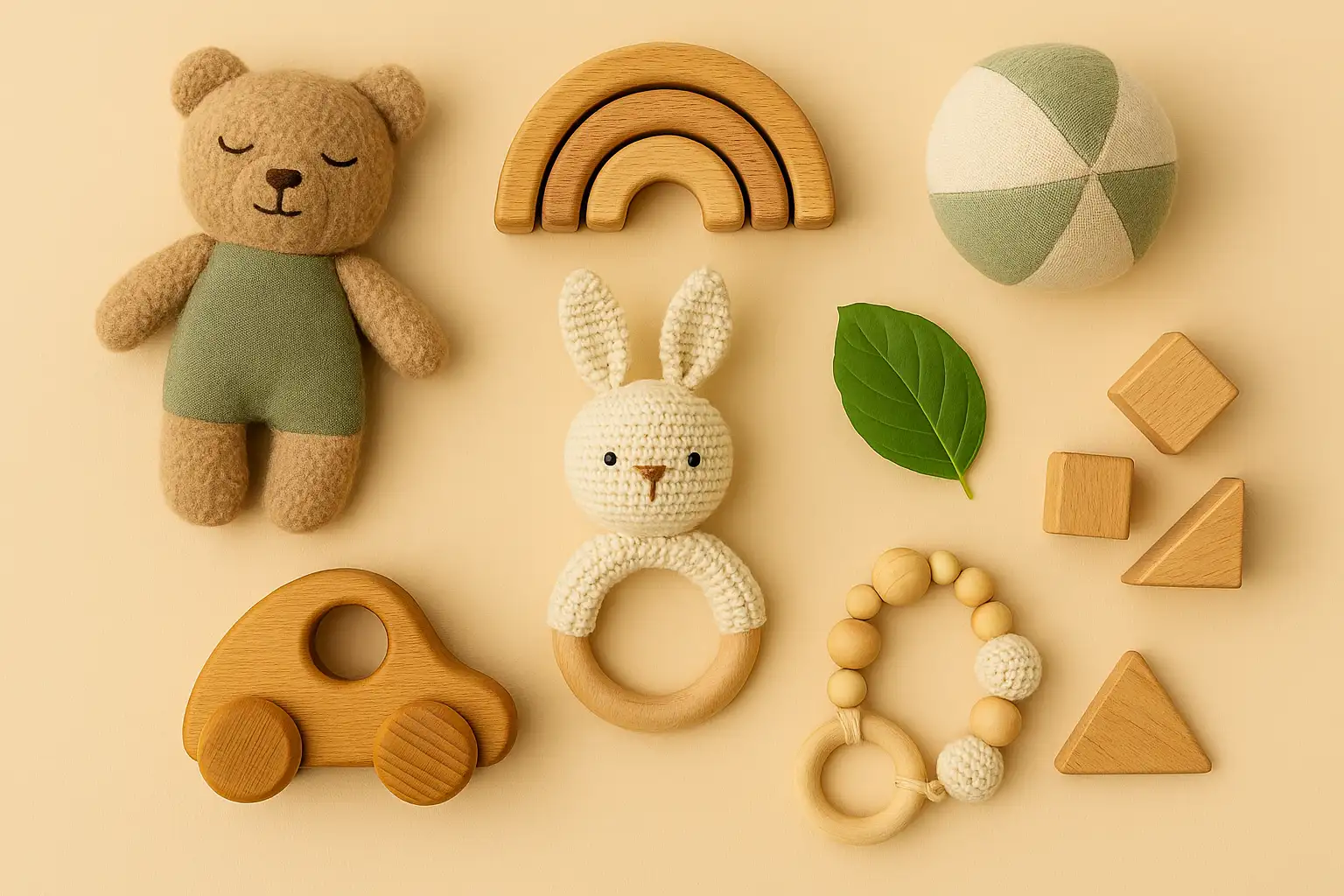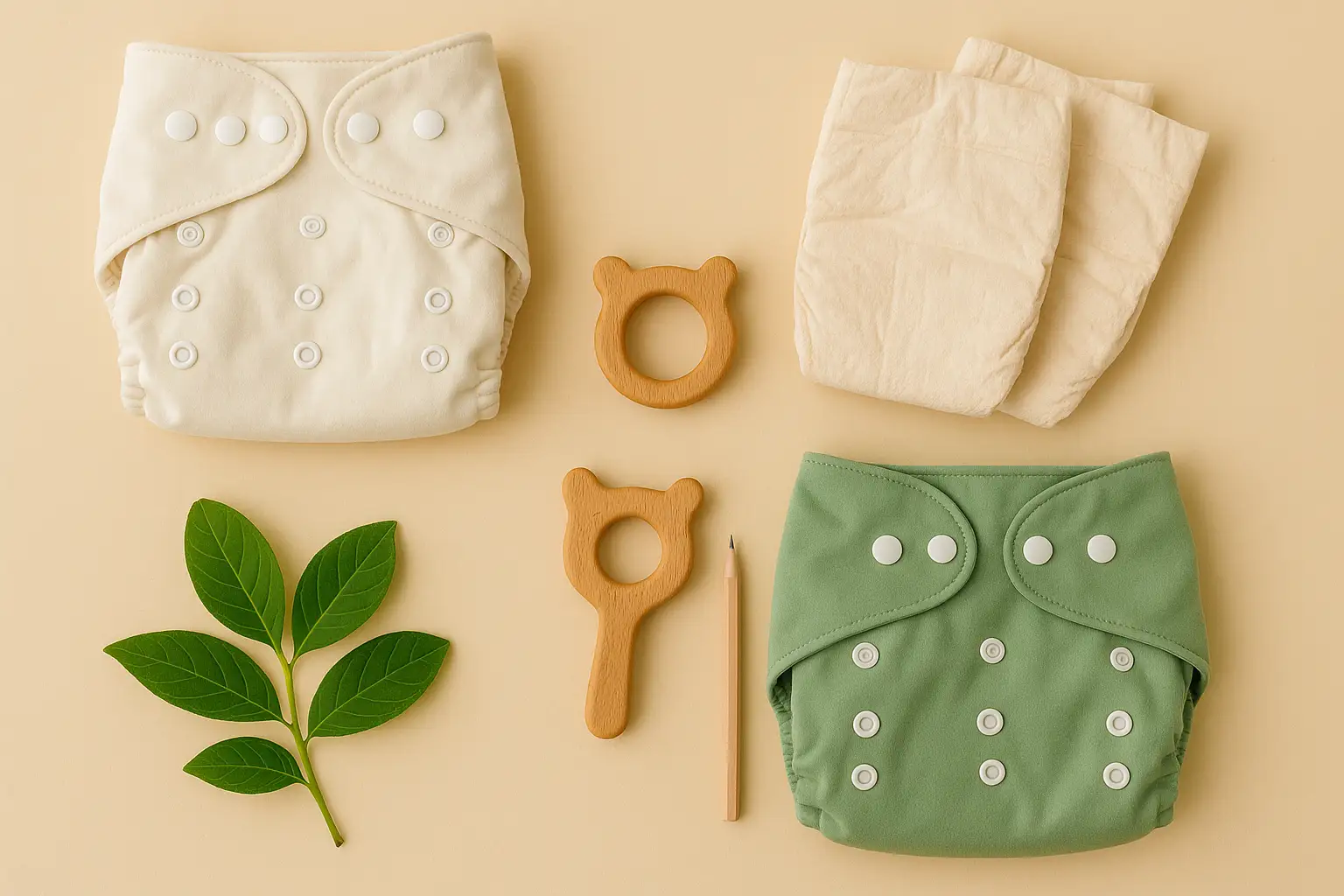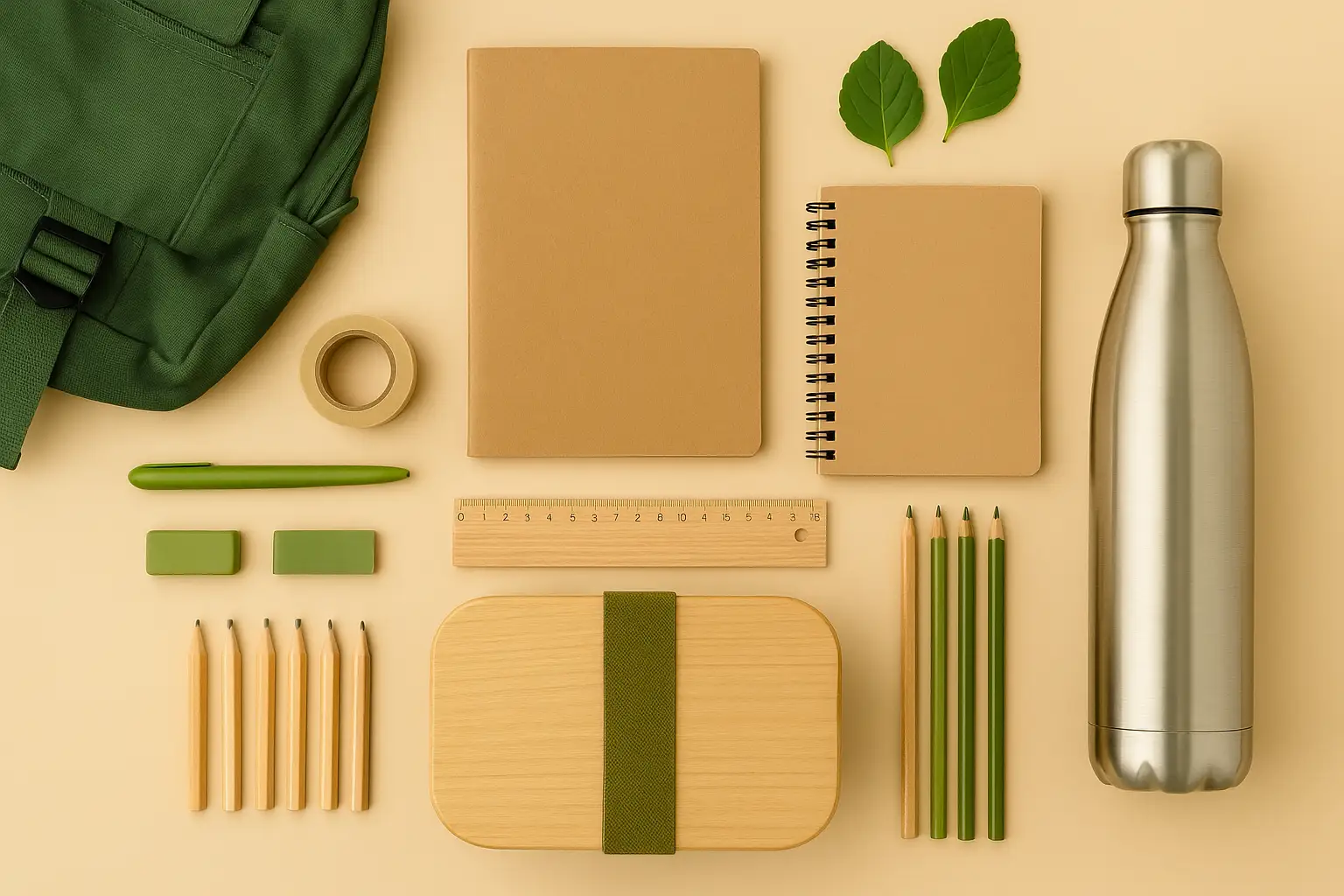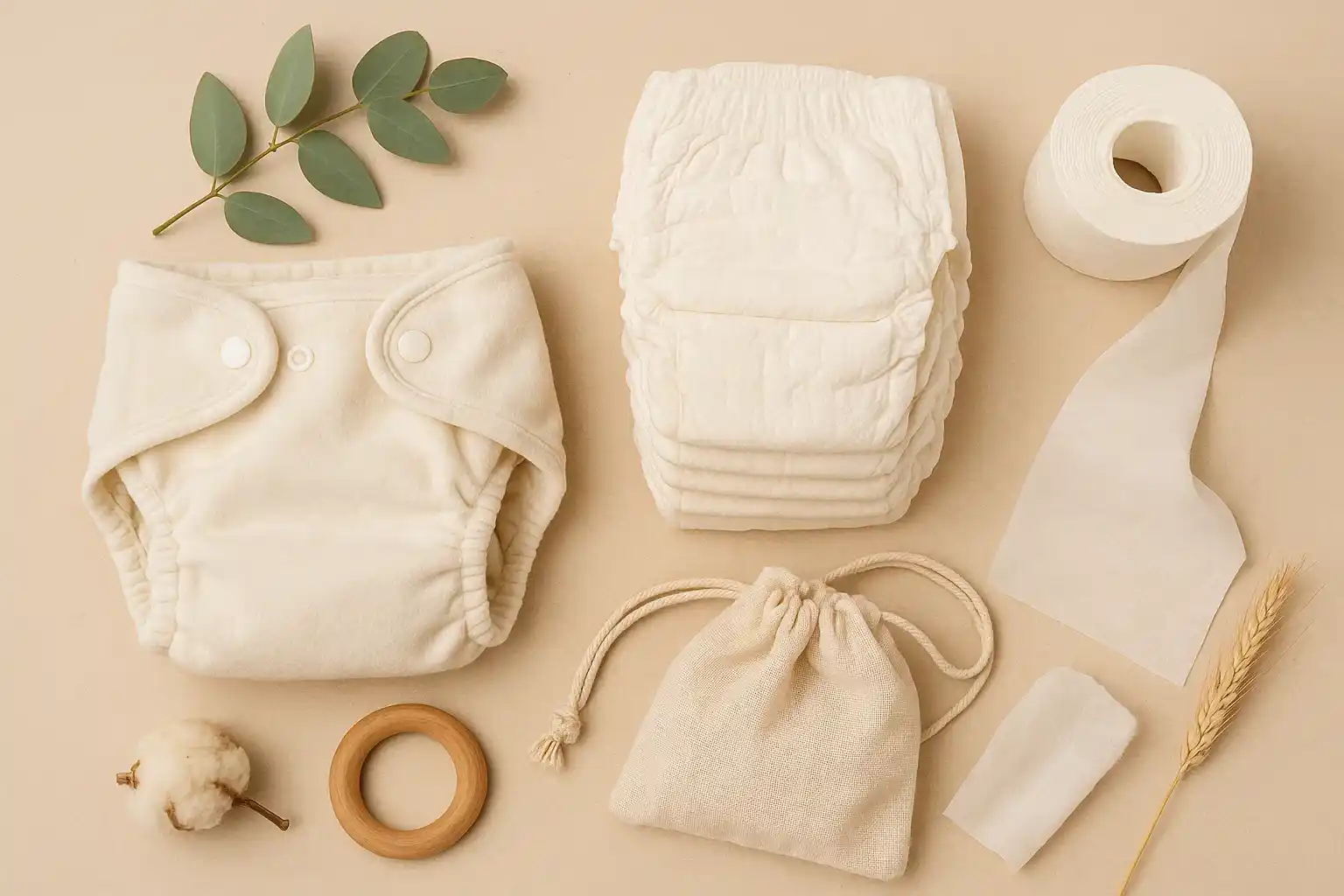Unplug and Play Sustainably: Discovering Eco Toys that Ignite Imagination and Minimize Plastic Waste

In a world saturated with brightly colored plastic toys often driven by fleeting trends, there's a growing movement towards a more thoughtful and sustainable approach to play. Parents and caregivers are increasingly seeking toys that not only captivate children's imaginations and foster their development but also tread lightly on the planet. Eco-friendly toys, crafted from natural materials and designed with longevity in mind, offer a compelling alternative, sparking creativity while significantly reducing the environmental burden of plastic waste.
The toys we choose for our children play a crucial role in shaping their understanding of the world and their values. By opting for eco-conscious options, we not only provide them with enriching play experiences but also subtly instill an appreciation for sustainability and a respect for the environment from a young age. This comprehensive exploration delves into the fascinating realm of eco-friendly toys, highlighting the benefits of natural materials, exploring toys that specifically foster creativity, and offering insights to guide you in curating a toy collection that is both engaging and environmentally responsible.
The Plastic Predicament: Understanding the Environmental Impact of Conventional Toys
The vast majority of toys manufactured today are made from plastic, often derived from fossil fuels. This reliance on plastic comes with a significant environmental cost:
- Resource Depletion: The production of plastic requires the extraction of finite fossil fuels, a process that contributes to habitat destruction and greenhouse gas emissions.
- Manufacturing Emissions: The manufacturing of plastic toys is energy-intensive and releases pollutants into the air and water.
- Durability and Lifespan: Many plastic toys are designed with planned obsolescence in mind, breaking easily and quickly ending up in landfills.
- Non-Biodegradability: Plastic takes hundreds of years to decompose in landfills, contributing to the ever-growing waste problem and potentially leaching harmful chemicals into the environment.
- Microplastic Pollution: As plastic toys degrade, they break down into microplastics, tiny particles that can contaminate our soil, water, and even the air we breathe, posing risks to both human and environmental health.
The Natural Playground: Embracing Eco-Friendly Materials for Play
Eco-friendly toys prioritize the use of sustainable and natural materials that minimize these environmental impacts:
- Wood (Sustainably Sourced): Toys crafted from sustainably harvested wood (certified by the FSC) are durable, biodegradable, and offer a tactile and sensory experience that plastic often lacks. Wood encourages open-ended play and can last for generations.
- Organic Cotton and Natural Textiles: Soft toys, dolls, and play silks made from organic cotton and other natural textiles are gentle on children's skin and grown without harmful pesticides and chemicals.
- Natural Rubber: Toys made from natural rubber, harvested from rubber trees, are a sustainable and biodegradable alternative to synthetic rubber and plastic. They are often used for teethers and bath toys.
- Bamboo: This fast-growing and renewable resource is increasingly being used to create durable and lightweight toys.
- Wool: Wool felt and yarn are natural, biodegradable materials that are often used for crafting toys and playthings.
- Cardboard (Recycled and Recyclable): Sturdy cardboard can be used to create imaginative play structures, puzzles, and craft materials, and it is easily recyclable.
Igniting Imagination: Eco Toys that Foster Creativity and Open-Ended Play
Beyond their material composition, eco-friendly toys often excel at sparking children's creativity and encouraging open-ended play, where there are no prescribed rules or outcomes. This contrasts with many plastic toys that have specific functions and limited possibilities for imaginative exploration:
- Building Blocks (Wooden): Classic wooden building blocks are a timeless toy that fosters spatial reasoning, problem-solving skills, and endless creative construction possibilities.
- Loose Parts Play: Collections of natural items like smooth stones, pinecones, shells, wooden discs, and fabric scraps encourage children to use their imagination to create their own games and scenarios.
- Art Supplies (Natural and Non-Toxic): Beeswax crayons, watercolor paints made with natural pigments, and recycled paper provide opportunities for artistic expression without harmful chemicals.
- Play Silks: These simple pieces of flowing fabric can become anything a child imagines – a cape, a river, a blanket for a doll, fostering imaginative role-playing.
- Wooden Dolls and Figurines: Simple wooden dolls and animal figures encourage imaginative storytelling and small world play.
- Natural Dough and Clay: Homemade playdough or natural modeling clay provide a sensory and creative outlet.
Curating a Sustainable Toy Collection: Practical Tips for Parents and Caregivers
Building an eco-friendly and imagination-sparking toy collection doesn't require replacing everything at once. Here are some practical tips:
- Prioritize Quality Over Quantity: Invest in a few well-made, durable eco toys rather than accumulating a large number of cheap plastic items.
- Embrace Secondhand Treasures: Explore thrift stores, consignment shops, and hand-me-downs for gently used wooden toys, puzzles, and games.
- Choose Open-Ended Toys: Select toys that can be used in multiple ways and encourage imaginative play rather than those with a single, prescribed function.
- Consider Toys Made from Natural Materials: Opt for wood, organic textiles, natural rubber, and bamboo over plastic whenever possible.
- Look for Durability and Longevity: Choose toys that are built to last and can withstand years of play, potentially being passed down to younger siblings or other children.
- DIY and Upcycle: Get creative and make your own toys from recycled materials. Cardboard boxes can become forts or cars, and fabric scraps can be sewn into puppets.
- Be Mindful of Packaging: Choose toys with minimal and recyclable packaging.
- Support Eco-Conscious Brands: Research and support toy companies that are committed to sustainability in their materials, production processes, and packaging.
- Involve Children in the Process: Talk to your children about why you are choosing eco-friendly toys and encourage them to care for their belongings.
Choosing eco-friendly toys that spark creativity and reduce plastic waste is an investment in both your child's development and the future of our planet. By prioritizing natural materials, open-ended play, and conscious consumption, we can provide children with enriching and engaging play experiences while fostering an appreciation for sustainability from an early age. These toys not only ignite imagination but also sow the seeds for a more environmentally responsible generation.
Related Blogs

Unplug and Imagine: Choosing Battery-Free Toys for Engaging and Sustainable Playtime
Foster imagination and save energy with manual musical toys, story books, and nature play.

The Great Diaper Debate: Navigating Cloth vs. Eco-Disposables for a Sustainable Start
Comparison of sustainable alternatives to help you make informed decisions.

Equipping Young Minds, Protecting Our Planet: Sustainable School Supplies Kit
Insights on creating a sustainable school supplies kit in a sustainable way.

Bathtime, Simplified: Eco-Friendly Alternatives to Bulky Plastic Baby Baths
Reduce manufacturing impact and clutter with sink bath seats, inflatable tubs, or repurposed containers.

A Gentle Foundation: Choosing Eco-Friendly and Non-Toxic Changing Mats for Your Baby
Opt for organic cotton, cork-based, or recycled textile changing mats free from PVC and phthalates.

Diapering with Intention: Exploring Eco-Friendly Alternatives to Disposable Diapers
Cut down drastically on landfill waste with cloth, compostable, or hybrid diaper systems.
Stay in the Loop
Get tips and insights tailored to your interests — no spam, just sustainability.